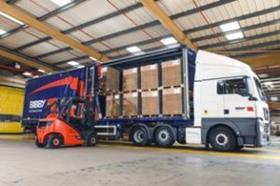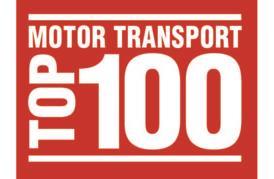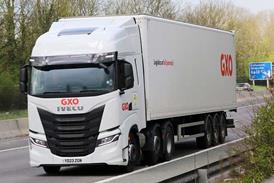
Aspoeck
The Aspoeck Radar Pedestrian Detection system uses advanced radar technology to detect pedestrians in the area behind a vehicle.
If the person is present and the vehicle starts to reverse, the brakes will automatically be applied. The system can be set for narrow spaces and vehicles with equipment at the rear that inhibit other forms of detection.
The zone detection technology works with a radar sensor that can be programmed with a field width of up to three metres. The trigger to a warning device can be up to 10 metres from rear of the vehicle.
The system works by transmitting and receiving low power electromagnetic energy. Any object encountered reflects the energy back to the sensor and the object’s size and distance is then calculated.
A display shows the position of the closest object and the sensor also has an alarm/brake trigger function
Our judges were impressed by the innovative approach taken to develop the product, with one describing it as “a good clear, concise submission showing technical improvements on safety related items”.
Bibby Distribution

Underpinned by a combination of innovation, technology and outstanding commitment, the Bibby Distribution fleet reached unprecedented levels of efficiency, reliability and safety in 2019.
Achievements included an average 99.9% uptime; consistent green OCRS in eight different traffic regions and a reduction in RIDDORs and lost time accidents of almost a third (30%).
Trailer annual test first-time pass rates have been at 99% for four consecutive years and the time taken for safety inspections and annual tests has reduced by 75% in 18 months.
The company has also seen what it describes as a “meteoric rise” in driver performance standards - from 1.3% to 57.7% grade A.
Tachograph infringements are monitored and rates have more than halved from 3% in 2015 to an all-time low of 1.42% in 2019.
New initiatives include a £1m investment in forward and inward facing in-cab cameras combined with Microlise telematics. These are core tenets of the company’s Road to Zero strategy.
Our judges liked the company’s strong determination and commitment to reliability, efficiency and safety.
“The submission demonstrates very high levels of legal compliance, road-worthiness and excellent annual test first time pass rates,” said one.
CameraMatics

CameraMatics is an ‘internet of things’ (IoT) software solution combining real-time camera footage, telematics, autonomous driving technology and connected smart sensor technology. It has been compared to the vehicle equivalent of a plane’s black box – but in real time.
This entry is focused on the CameraMatics Go App, which combines all key fleet risk management, safety and compliance needs into a single powerful platform.
After close consultation with leading fleet managers, the development criteria was to avoid having to juggle multiple systems at once, and to provide the ability to view and manage fleets remotely or on the move.
The CameraMatics Go app therefore takes the system from desk-based to anywhere, bringing the powerful functionality to the fleet manager’s phone or tablet, wherever they are.
It includes Driver and Manager modes and streamlines walkaround vehicle checks, accident reporting and compliance as well as allowing fleet managers to be released from their desks.
“A very innovative solution,” said one judge. “It reduces the reliance on paper related documents, with alert measures and preventive checking in critical areas of importance.”
Tesco

The Tesco.com fleet manages specification, acquisition, repair, maintenance and disposal for over 4,800 multi-temperature 3.5-tonne vans which deliver from six customer fulfilment centres (CFCs) around London and 350 stores throughout the UK.
Vans make up to 45 deliveries a day and cover on average 30,000 miles a year.
The team highlighted its high levels of legal compliance, vehicle availability and reliability and fuel consumption. Last year saw a record first-time MOT pass rate of 99%.
Over 1,000 new vans built this year will have side scan radar, integrated with a camera system and additional lights to improve visibility and indicate the working area for unloading.
Tesco is also retro-fitting a four-camera system to reduce blind spots and side impact protection.
Two electric vans were developed last year which have been operating around London. This year it is expanding its electric van fleet to 20 to 30 vehicles.
“A commendable use of technology for safety,” said one judge. “And a strategy to develop the delivery fleet to be powered by electric.”













